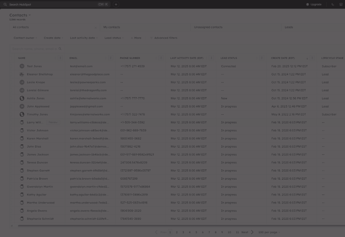Creating software that people love is creating software that helps grow and retain customers. Think of all the companies with a loyal following. Their customers will tell you that they haven’t been able to find the same benefits, features, and overall great experience anywhere else. That is what makes them want to invest their time and money into this company. Their excitement is so infectious it even makes strangers want to give this company a try.
So how do you create this for your company?
1. Find a Unique Problem/Opportunity
Many companies start off by trying to appeal to as many people as possible with their software. While it may get your business off the ground, the problem with this strategy is that it doesn’t inspire customer retention and loyalty. A person isn’t going to remain loyal to software that doesn’t cater to them in any way.
Customer loyalty and retention are major factors in sustaining a business. When your company doesn’t have loyal customers bringing in revenue, the expenses of trying to acquire new customers weigh much more heavily, and it’s much more difficult for your business to make a profit.
This is why your team should focus on creating software that creates a unique solution or builds on an untapped opportunity. These opportunities can even be found within you own customer base. Listen to their complaints, read their emails, and look for the common root of where the problem or opportunity may be stemming from. Often the best ideas come from your own customers; they just don’t how to implement it.
This process may take several heads coming together, but training your team to come up with unique or clever solutions will give your team a competitive edge. It will also give your company a powerful and passionate band of customers who now finally feel that their voices are being heard and passionate customers are many companies' best promoters.
2. Design it Well
Your software's design is as important as its core benefits. There’s no use in designing software if people can’t figure out how to use it, navigate it, or understand the technical jargon being thrown in their face. It shouldn’t be clunky, slow, or have lot of downtime.
In fact, all of those things may be one of the quickest ways to lose your customers because it hinders them in accomplishing their tasks and goals--the main objective of using your software in the first place.
If you look at many top brands in the tech industry, there is a common factor of people needing minimal assistance to pick up and use their technology. Many up and coming companies take this as a sign to follow in the footsteps of their successful predecessors in their software design, but this doesn’t mean your design has to be a carbon copy.
Your developer team just needs to be focused on implementing changes that have a purpose. Don’t try to show off a fancy trick or buzz word innovation just because it’s popular right now. Think about if any of these changes would benefit your customers in the long-term, not just something that will mildly amuse them for a month.
Your design should be making things easier, more efficient, more secure, or more enjoyable for your customers in the long-term. Keep this in mind with your software design. If any changes or additions to your software don’t accomplish these things, it’s best to save that idea for later until it does. If you're struggling, start basic and bridge out new features and enhancements that cater to your customers' specific needs and solutions from there.
3. Humanize Your Software
Tech professionals have a bad rep for not being the most warm of individuals. A great way to change that could actually be through creating more engagement opportunities within your software.
Research your target customers to help humanize your software. Not just their personalities and demographics, but their goals in life, their industry, and any challenges they many face on that journey. Incorporate this into your software.
For example, implement some video tutorials and tips within your software. Use people who will remind your customers of themselves. Get them to talk about how they reached the same goals your customers are seeking. This will help your customers connect with your software, even more so if these video guides answer many of their questions and help them avoid missteps.
Many people will be using your software, and may want the same end goal, but they will be taking different paths to get there. The more that you speak to their individual path, the more customers will feel as though your software was personally made for them. Buyer personas will allow your company to visualize similar groupings of customers necessary to do this.
A personalized experience is very difficult feeling to give up once a person has experienced it and other software of similar capabilities will always be seen as not quite on the mark in their eyes. That said, the more you know about your customers, the more you can create software that better speaks to their needs and wants and habits. Humanizing your software rewards your company back for its efforts.
4. Be Adapatable
Your software needs to be agile. The pace of change in the technology industry is the fastest, but the key is being able to identify which advancements are nothing more than a fad and which could have real implications in your field.
These advancements could be game-changing and shake up the industry, or they could provide better quality for your customers or they could improve your business operations. It could do anything, but to the key is to determine if the cost of investing in it would be offset by the return in profit? If not, scrap it or save it for another day.
You team also needs to be agile in dealing with feedback related to your software. Don’t wait for emails to pour in that customers don’t like this new feature. Your team should already be tracking and observing the user data related to it. The data should tell you that fewer and fewer people are using it well in advance. Use this information to be proactive and engage your customers. Maybe ask them what issues they have with this feature in an email. Take their concerns and implement changes in a head-on fashion.
Apply this philosophy to anything that could possibly impact your software or business. It could everything from government law changes, rising security risks, disruptive technological innovation, or scarcity of resources. Again, it's just about being proactive i and taking notice of things that could impact your company before they take a toll. This will make your software resonate more deeply with customers, which will help your business grow, retain customers, and fend off the competition.



